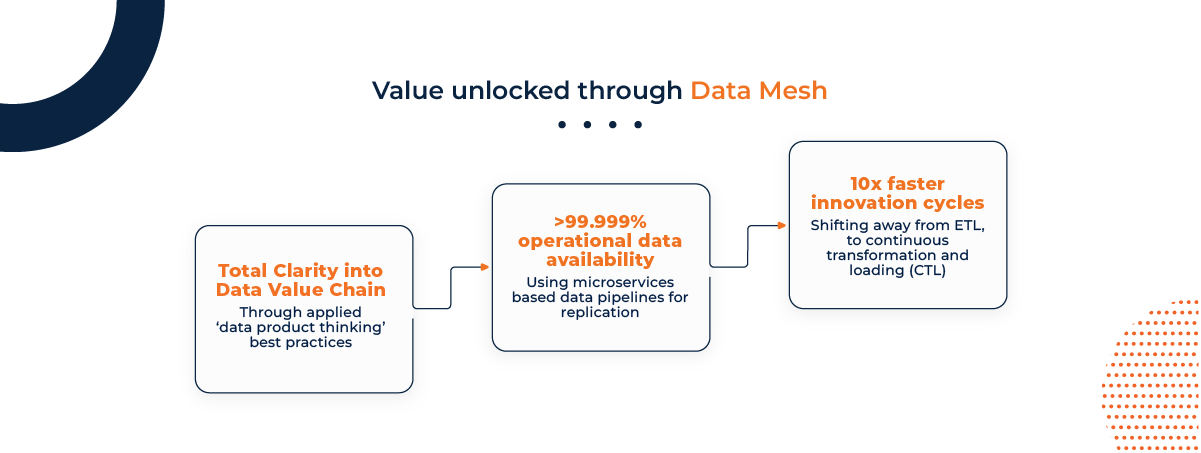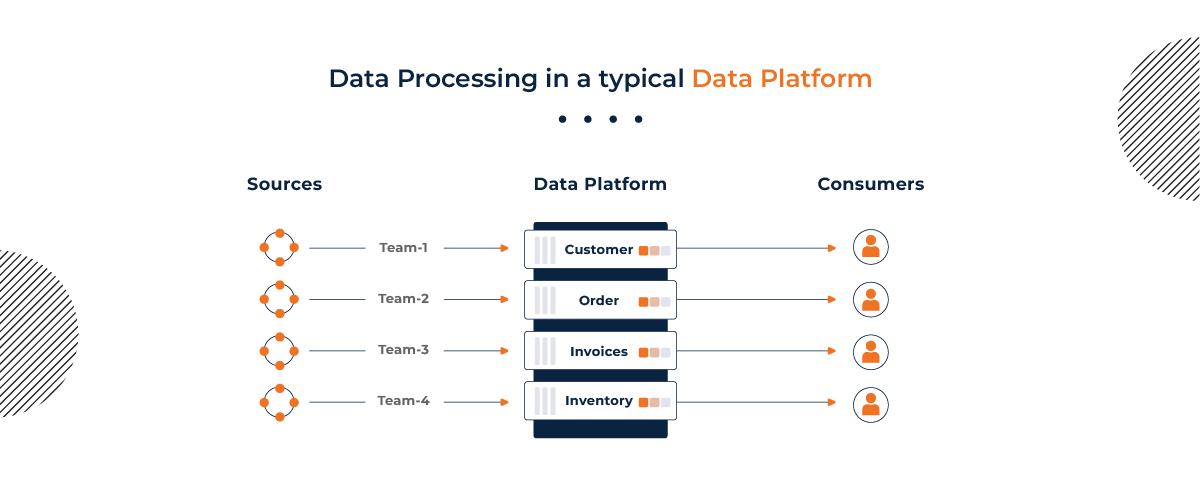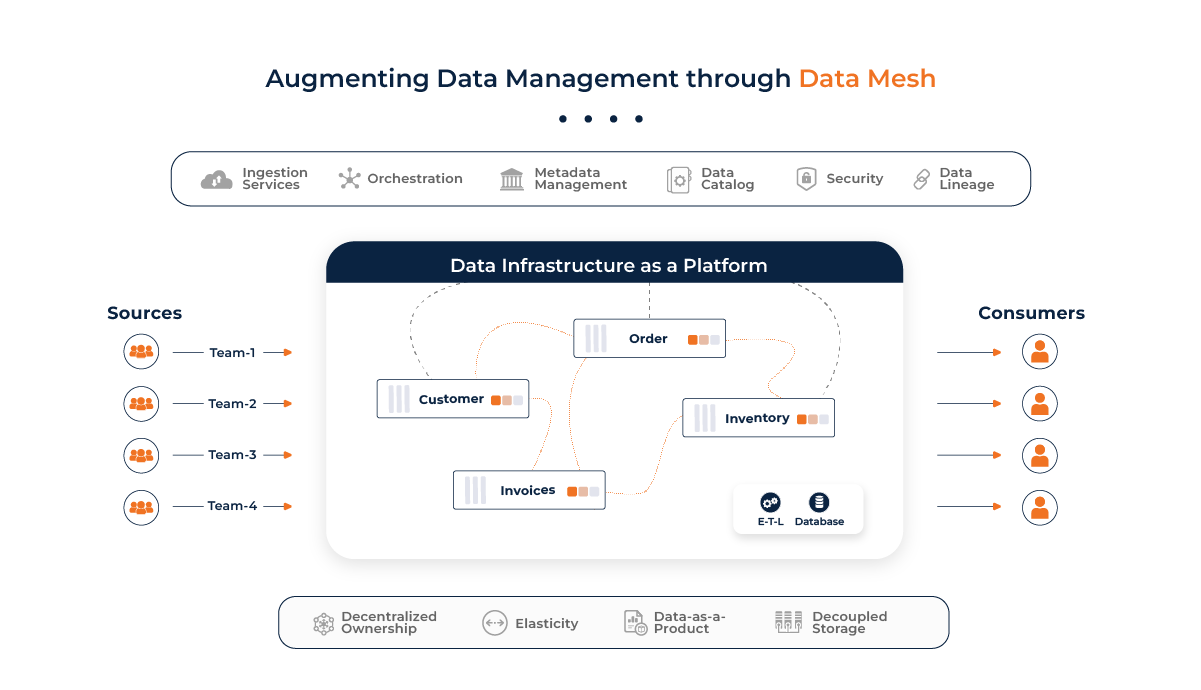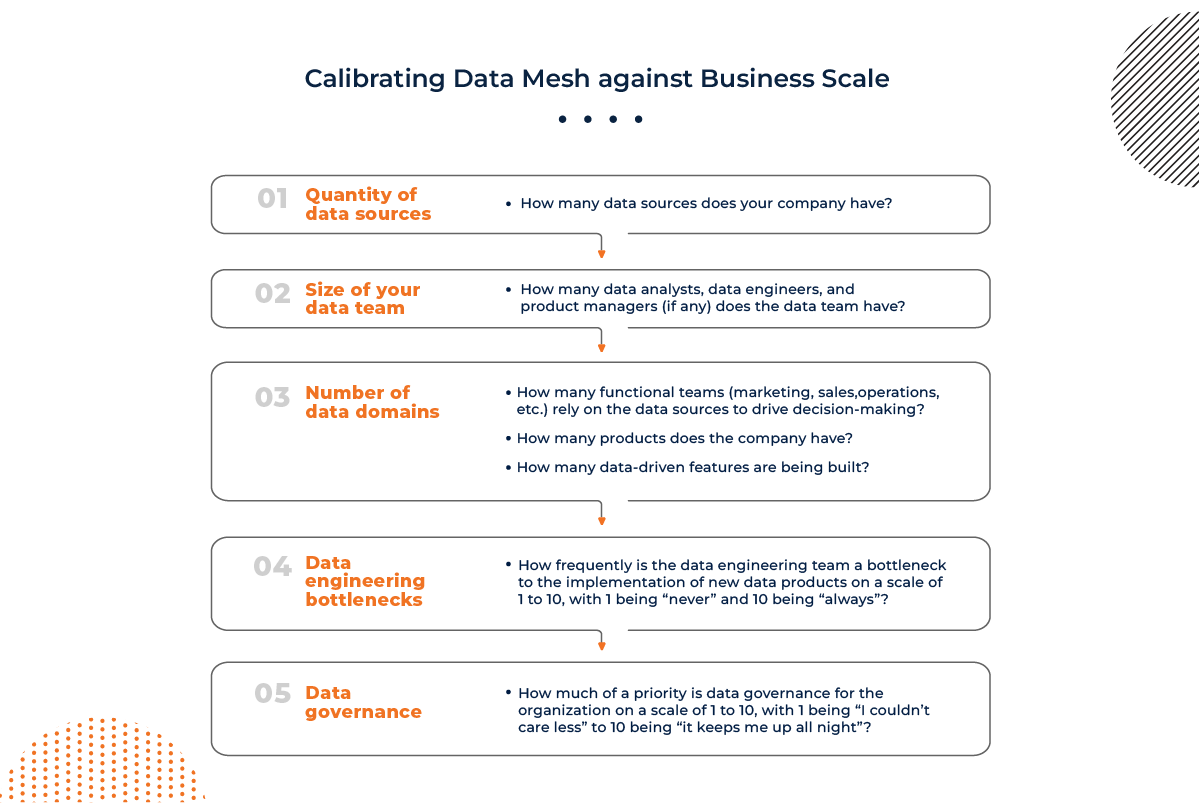In the age of self-service business intelligence [1], becoming a data-driven organization remains the chief strategic goal of every company. However, few companies tend to their data architecture with the level of democratization and scalability it deserves.
Both the analytics and technology industries are now in a state of transition. In fact, we rarely use the phrase “Big Data” anymore; instead, we talk about “digital transformation” or “data-driven organizations.” The industry, largely, has realized that data is not the new oil because, unlike oil, the same data can be repurposed for several initiatives.
Much in the same way that software engineering teams transitioned from monolithic applications to microservice architectures, data mesh is, in many ways, emerging as the data platform version of microservices.
This new kind of data architecture will empower faster innovation cycles and lower costs of operations, with evidence from early adopters of this approach validating potential large-scale benefits. [2] [3] [4]

A typical data lake architecture for an e-commerce business mainly constitutes the following:
For each domain, a team of data engineers inputs all the data, via ETL tools or streaming solutions, on a central platform (Data Lake). Although each team may possess expertise about their specific domain, a knowledge gap among different teams and their data sets may persist.

What are the potential challenges with this architecture?
In this e-commerce scenario, rather than centralizing data, data mesh emphasizes four key principles:
Data mesh moves data analysis and management closer to specific domain teams, such as customer insight, sales, or data science teams, who best understand the data. In this pragmatic and automated approach, each team owns and is responsible for the data in their domain.
Here is what the same e-commerce business would look like with a data mesh architecture:

What has changed in the transition to data mesh?
Below is a simple questionnaire to determine whether it’ll be worthwhile for your organization to invest in a data mesh.

On the surface, the idea of a data mesh is not very different from several software-as-a-service (SaaS) applications, as it leads to obtaining customers, offering data as products, and selling and shipping them. For instance, data for demand forecasting or customer segmentation, or a BI dashboard.
However, implementing a data mesh requires two key considerations:
1. It takes time and changes in approach to create a platform such as this. It is like deciding on an MVP architecture – “should it be monolithic or microservices?”
2. How can one logically group and organize domains? This requires an enterprise view and likely a cultural shift for your organization as well, entailing federating data ownership among data domains, and owners who are accountable for providing their data as products.
Although it is easier, faster, and cheaper to deliver a monolithic application, especially for the very first release, businesses that can identify their key requirements as described above can unlock new potential and create value with data mesh.
[1] Robinson, Scott, Craig Stedman, and Mary K. Pratt. “What Is Self-Service Business Intelligence?: Definition Techtarget.” Business Analytics, n.d. https://searchbusinessanalytics.techtarget.com/definition/self-service-business-intelligence-BI
[2] Baker, Tristan. “Intuit’s Data Mesh Strategy.” Medium, February 18, 2021. https://medium.com/intuit-engineering/intuits-data-mesh-strategy-778e3edaa017
[3] Saghir, Maddie. “HSBC Securities Services Unveils New Data Platform.” Asset servicing times, July 7, 2020. www.assetservicingtimes.com/assetservicesnews/dataservicesarticle.php?article_id=10675
[4] Forward, Flink. “Netflix Data Mesh: Composable Data Processing - Justin Cunningham.” YouTube, April 28, 2020. https://www.youtube.com/watch?v=TO_IiN06jJ4

Tapas has close to a decade's experience in the data engineering field and has expertise in functions related to architecture design, business impact analysis, and much more. A deep-learning enthusiast, he is also making strides in the ML space, frequently cracking ML competitions and picking up titles such as MachineHack Grand Master and Kaggle Notebooks Expert. Beyond his work, he enjoys imparting his tech-knowhow by writing blogs and getting a chuckle out of fine DE-humour.
Subscribe to our newsletter to receive latest updates